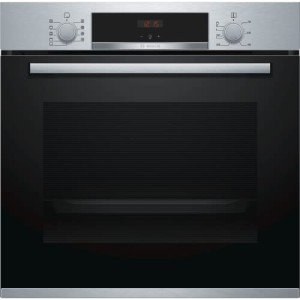You'll Never Guess This Built In Electric Oven's Secrets
페이지 정보

본문

The Comprehensive Guide to Built-in Electric Ovens and Hobs
In today's busy world, modern-day kitchen appliances have actually progressed drastically to cater to the tastes and requirements of modern house owners. Among these appliances, Built In Electric Oven-in electric ovens and hobs stick out for their efficiency, style, and performance. This short article explores the functions, advantages, installation tips, and maintenance of built-in electric ovens and hobs, together with resolving often asked questions.
Comprehending Built-in Electric Ovens
What Is a Built-in Electric Oven?
A built-in electric inbuilt oven is a home appliance developed to be set up into a wall or kitchen cabinets, offering a seamless, integrated look in the kitchen. Unlike freestanding ovens, built-in designs save space and often come equipped with additional functions such as self-cleaning cycles, convection cooking, and built in electric Oven numerous cooking modes.
Types of Built-in Electric Ovens
- Single fitted ovens: Ideal for smaller cooking areas or those who cook for less individuals.
- Double Ovens: Offer more cooking space, ideal for bigger households or those who amuse frequently.
- Combination Ovens: These consist of both a traditional oven and a microwave, providing flexible cooking choices.
Advantages of Built-in Electric Ovens
| Benefit | Description |
|---|---|
| Space-Saving Design | Fits perfectly into cabinets, freeing up counter space. |
| Improved Aesthetics | Creates a contemporary, expert kitchen look. |
| Versatile Cooking Options | Typically includes several cooking modes consisting of bake, broil, and built In Electric oven convection. |
| Energy Efficient | Consumes less energy than standard ovens. |
Comprehending Built-in Hobs
What Is a Built-in Hob?
A built-in hob is a cooking surface set up into the kitchen counter top, integrating effortlessly with the kitchen style. Offered in electric, induction, and gas varieties, electric hobs are renowned for their precision and ease of use.
Kinds Of Built-in Hobs
- Electric Hobs: Traditional coil aspects that heat through electrical resistance.
- Induction Hobs: Use magnetic energy to heat just the pots and pans, making them quicker and safer.
- Ceramic Hobs: Feature a smooth surface area with glowing heat underneath, using simple cleaning.
Benefits of Built-in Hobs
| Benefit | Description |
|---|---|
| Fast Cooking Times | Electric hobs heat rapidly, decreasing general cooking time. |
| Easy to Clean | Flat surface area allows for fast and simple cleaning. |
| Durable | Typically built to last and endure high temperatures. |
| Versatile Compatibility | Works well with various pots and pans materials. |
Setup Considerations
Installing a built-in electric oven and hob needs careful preparation.
Steps for Installation
- Measure the Space: Ensure the dimensions of the oven and hob match the designated area in your kitchen.
- Inspect Electrical Requirements: Consult an electrical contractor to ensure wiring can deal with the home appliance's power needs.
- Positioning of Appliances: Position the oven at a hassle-free height, generally between waist and eye level.
- Ventilation: Ensure appropriate ventilation, particularly if your oven includes a range hood.
Necessary Tools
- Power drill
- Screwdrivers
- Level
- Determining tape
Safety Precautions
- Always disconnect the power before installation.
- Follow producer instructions carefully.
- Consider employing a professional for electrical connections.
Upkeep Tips
Preserving built-in electric ovens and hobs is important for durability and performance.
Routine Care Routine
- Cleaning the Surface: Use a soft cloth and manufacturer-recommended cleaner.
- Checking Electrical Connections: Check cables and plug for damages regularly.
- Cleaning Filters: If the oven has a ventilator, tidy or change the filters as required.
Troubleshooting Common Issues
| Concern | Possible Solution |
|---|---|
| Oven Won't Heat | Examine the power supply and heating element. |
| Heating Inconsistency | Check the thermostat and oven calibration. |
| Hob Not Heating | Make sure cookware is suitable and examine the power supply. |
Frequently Asked Questions
1. How do I choose the ideal size built-in electric oven?
Picking the ideal size involves determining your kitchen space and considering just how much cooking you typically do. If you captivate often or have a large household, select a double oven.
2. Are built-in electric hobs safe to use?
Yes, built-in electric hobs are safe, especially induction hobs which just heat the cookware, minimizing the risk of burns.
3. Can I install a built-in builtin oven and hob myself?
While it is possible for knowledgeable DIY lovers, employing an expert is suggested, particularly for the electrical connections.
4. How frequently should I clean my built-in oven and hob?
Cleaning up ought to be done regularly after use, with deep cleansing periods depending on cooking frequency - usually every couple of months.
5. Do built-in appliances need unique upkeep?
Built-in appliances require similar upkeep to freestanding designs, but correct care needs to be taken with their surrounding cabinets.
Built-in electric ovens and hobs provide a blend of technology and design, providing effectiveness and contemporary aesthetics to any kitchen. With appropriate choice, careful installation, and routine upkeep, these appliances can enhance one's cooking experience for several years. Understanding the functions, benefits, and care requirements can empower house owners to develop the kitchen of their dreams-- efficiently and stylishly.
As cooking areas continue to develop into main centers of the home, picking the right built-in services plays an important function in daily culinary creativity and satisfaction.

- 이전글9 . What Your Parents Taught You About Windows Luton 25.05.19
- 다음글Why Ovens Integrated Is Tougher Than You Imagine 25.05.19
댓글목록
등록된 댓글이 없습니다.



